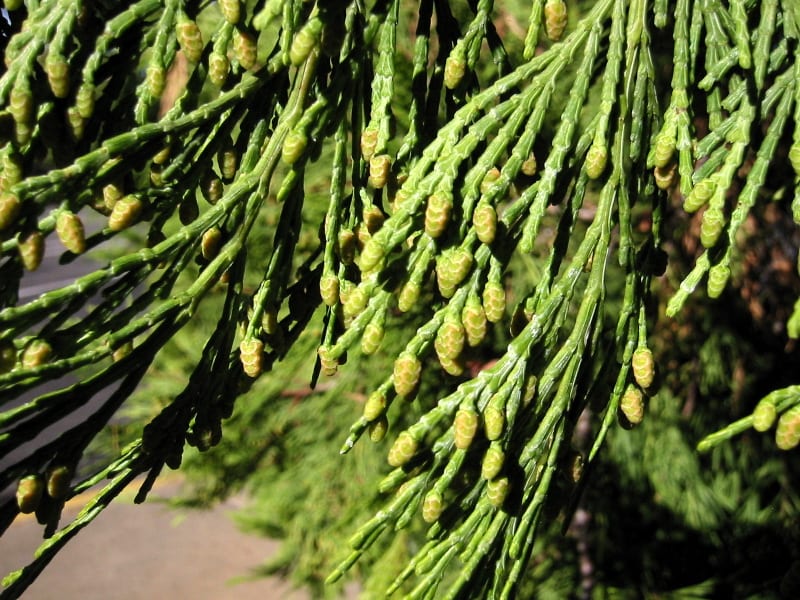
Image - Wikimedia / Wsiegmund
El Calocedrus decurrens It is a beautiful but imposing conifer that keeps another conifer company that, although it is hard to believe, is bigger than it: the redwoods. But our protagonist is more interesting if possible, since it resists somewhat better temperatures that are a little warmer.
Although it is still a species suitable only for large gardens that enjoy mild summers and that endure winters where snow is a faithful protagonist, it withstands drought better than one might expect.
Origin and characteristics

Image - Wikimedia / Ewen Roberts
It is a conifer native to western North America, where it grows at an altitude between 50 and 2900 meters above sea level. It is popularly known as California Libocedar or California Frankincense Cedar. Reaches a height of 40 to 60 meters, and its trunk thickens up to 3 meters in diameter, with the bark orange-brown when young and greyish when aging.
Its crown is made up of squamiform evergreen leaves, of a glossy dark green color, and they give off a very intense resin aroma. It is monoecious, that is, the male and female flowers are found in the same specimen. The former are globular and golden, while the latter have six scales. The cones are small and ovoid, with a size of 15-25mm.
Uses of Calocedrus decurrens
- Ornamental: it is a very decorative plant, ideal to plant as an isolated specimen or in rows.
- Wood: being light, it is used to make pencils, or in marquetry.
- Cortex: when burned it is used as incense.
What are the cares?

Would you like to have a copy? Then we advise you to take the following care:
- Location: it must be outside, in an area where it is shaded as a youngster and where, as it grows, it is only exposed to the sun.
- Earth: the soil must be fertile, well drained and acidic (pH 5 to 6).
- Irrigation: about 3 times a week in summer, and every 4 or 5 days the rest of the year.
- Subscriber: in spring and summer it is advisable to pay it with organic fertilizers, such as compost, mulch, egg and banana peels, etc.
- Multiplication: by seeds in winter (they need to be cold before germinating).
- Rusticity: resistant up to -18ºC.
What did you think of this tree?